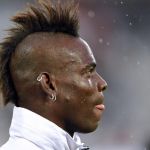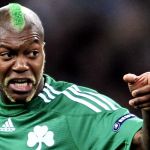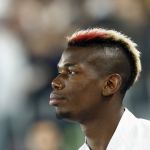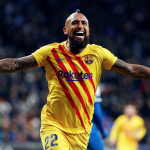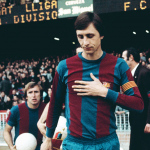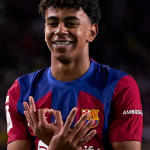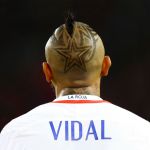
Ode to the Arturo Vidal's mohawk
The Chilean returns to Serie A and brings back his iconic crest
September 23rd, 2020
"Tell me what hair you have and I'll tell you which football era you belong to" seems to be one of those polls that were fashionable on Facebook in 2008, when the social network registered its first boom in Italy. The hair of a football player is one of the most identifying and most representative elements, because each period corresponds to a precise trend: the rebellious mop of the 90s, the shaved hair of the beginning of the millennium alternated with a new version of long hair, up to to get to the meches and the double cut. An element that has been constant since 2000 has been the crest, which has always been a symbol of the most aggressive players.
There are many examples of footballers who have opted for the crest, declining it and adapting it to their personality. There are those who wore it with moderate sobriety like David Beckham, Raul Meireles and El Shaarawy; there are those who have decided to dare trespassing into excess: from the historical examples of Freddie Ljungberg and Kayazuki Toda, passing through the colorful Pogba, Neymar, Joe Cole and Djibrille Cisse, ending with Marek Hamsik, Mario Balotelli, Mamadou Sakho, Radja Naingollan and Brek Shea. Arturo Vidal, the new signing of Antonio Conte's Inter, also belongs to this category.
The crest is one of the few stylistically traversal elements between the different decades. In the last 20 years there have been many interpreters of this hairstyle, with results that are not always exciting. Like any evolution, the transformation from "basic crest" to "mohican crest" is a consequence of the changing times. Arturo Vidal has followed the whole process, starting from the normal tuft raised in the center at the time of Colo Colo and ending up being one of the icons of the almost extreme hairstyle. The origins of the Chilean crest dates back to 2007, when the former Barça warrior crossed the ocean to wear the Leverkusen shirt. In an interview with L'Equipe he explains why he chose this type of hairstyle: "I did it after the U20 World Cup in 2007. I remember that a German player (Christian Ziege) had it at the 2002 World Cup and was super aggressive, almost scaring the opponents. I wanted that personality to become mine and I wanted to take on that aspect."
The tactical evolution of the 4 times Italian champion with Juventus is not followed by a complete aesthetic evolution. Although the crest underwent a drastic change only between the first years in Germany and his arrival in Italy, the hairstyle accompanied him throughout his career. Consistency, however, is another skill of true warriors, the main source of inspiration for Vidal - his hairdresser in 2013 went so far as to say that he "treats his crest like his brother". From a stylistic point of view, maintaining a legacy of the early 2000s is certainly not "cool" but the evolution of her hairstyle lies in knowing how to vary the length and "designs" that accompany the crest. Alongside the characteristic element of Vidal's style, there was everything: from the stars for his Chile to geometries that recall the Māori culture, passing to the symbol of the 30 championships won by Juventus.
Now the crest - which has returned to Italy and to Serie A in the last few hours - is part of the character / player. Even when in 2014 he decided to marry his now ex-wife Maria Teresa Matus, Vidal didn't give up on his symbol and brought his crest to the altar - giving his best even in an electric blue dress. The celebratory decorations are the plus that he experienced with his Juventus teammate Paul Pogba, before being taken up and adapted in a thousand different ways by many other players. To carry the crest in a certain way you need personality - and that certainly is not lacking in the new Inter midfielder - and that dose of very healthy ignorance that is needed to go beyond a simple haircut.















